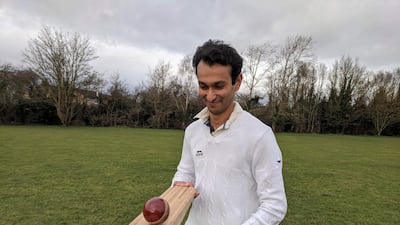Traditionalists of the game might say it’s just not cricket – but University of Cambridge researchers say using bamboo instead of willow in the manufacture of bats makes perfect sense.
A new study found that bamboo bats are cheaper to produce, more sustainable and stronger than willow blades, and could help grow the game worldwide.
The study, published in the Journal of Sports Engineering and Technology, also found a laminated bamboo bat possessed a larger sweet spot, making it "a batsman's dream".
Willow trees take 15 years to mature enough to produce cricket bats, whereas bamboo only requires five to six years and abounds in China, South America and South-east Asia, as well as in cricket-obsessed India.
Bamboo bats could increase participation in lower income countries thanks to lower production costs and make cricket much more sustainable without compromising quality, the study said.
Ben Tinkler-Davies, who co-authored the study, suggested crowds would barely notice the change.
"Whether you're playing or spectating, you wouldn't notice much of a difference,” he said.
"Because laminated bamboo is so strong, we're very confident we can make a bamboo bat light enough, even for today's fast-scoring, short forms of the game."
The study found bamboo is 22 per cent stiffer than willow and that its sweet spot performed 19 per cent better.
The prototype bat's sweet spot – the point where the ball is hit most effectively – is larger than a traditional bat's and located closer to the toe, allowing it to transfer more energy to the ball.
Co-author Darshil Shah said the concept represented a major innovation for the game.
“They would be a batman’s dream,” he said.
"The sweet spot on a bamboo bat makes it much easier to hit a four off a yorker for starters, but it's exciting for all kinds of strokes.”
Bamboo's higher density means the bat's shape would have to be redesigned to make a lighter product before batsmen can blast bowlers with their new weapon.
The London-based Marylebone Cricket Club – the conservative custodian of cricket's laws – must approve any change to the material used to make bats.
Cricketers have long experimented with different types of bat, from the length of the handle to thickness of the blade and weight, to try to gain a competitive edge.
In 1979, Australian Test cricketer Dennis Lillee caused controversy by using an aluminium bat, which was then banned.
Cricket's current laws, brought in after the Lillee incident, state that bats must be made of wood. Bamboo is a type of grass.
Mr Shah argued that a bamboo bat would still be within the spirit of the game.
“It's a plant-based material. Cane, a type of grass, is already used in the handle," he said.
"Tradition is important but think about how much cricket bats, pads, gloves and helmets have already evolved. If we can go back to having thinner blades but made from bamboo, while improving performance, outreach and sustainability, then why not?"

